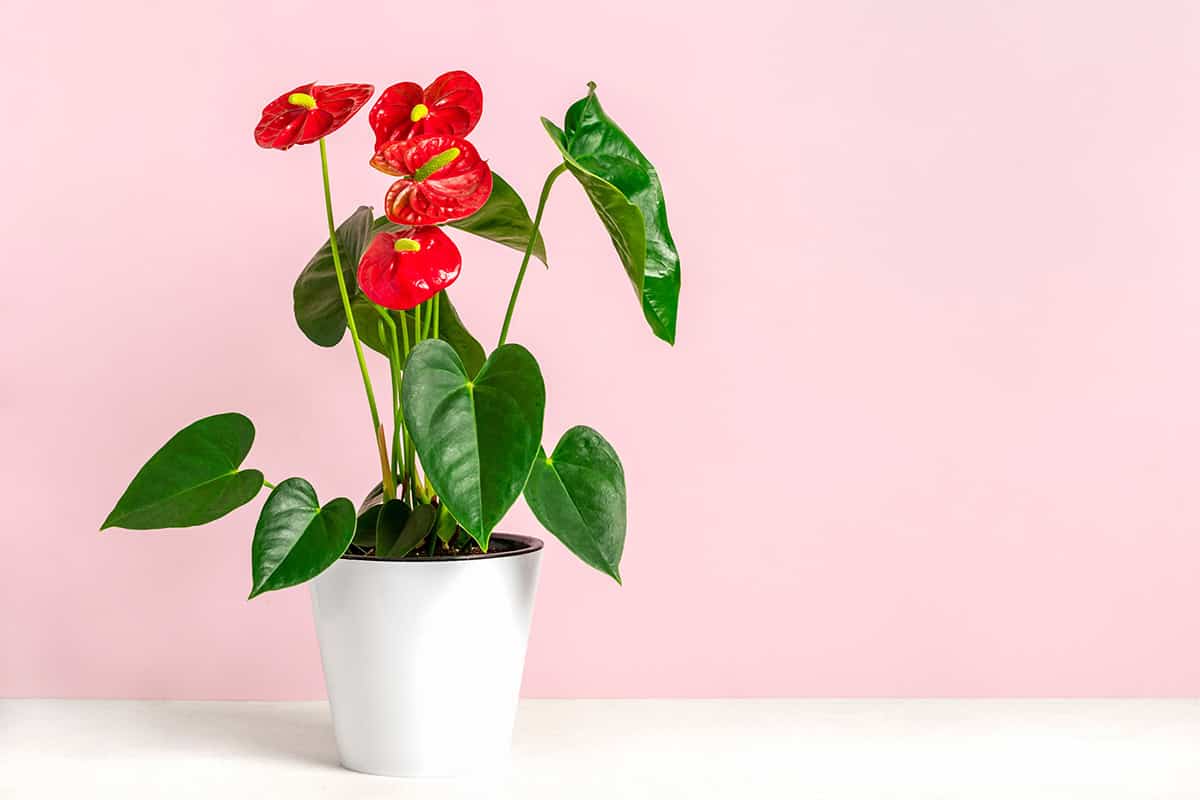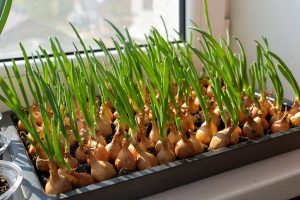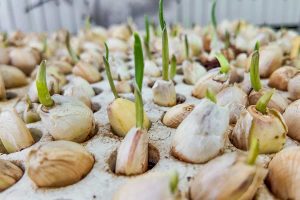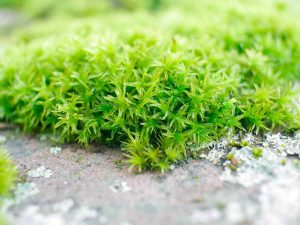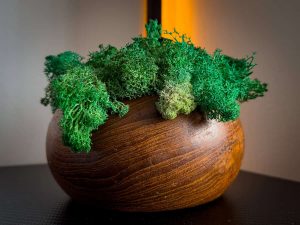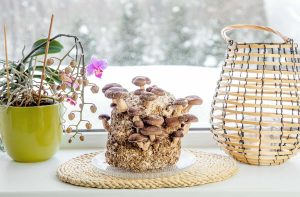Caring for an anthurium goes beyond basic watering and sunlight. These tropical beauties have unique needs that can catch even seasoned plant lovers off guard. This article breaks down the care essentials so your anthurium always looks its best.
Table of Contents
What Is An Anthurium Plant?
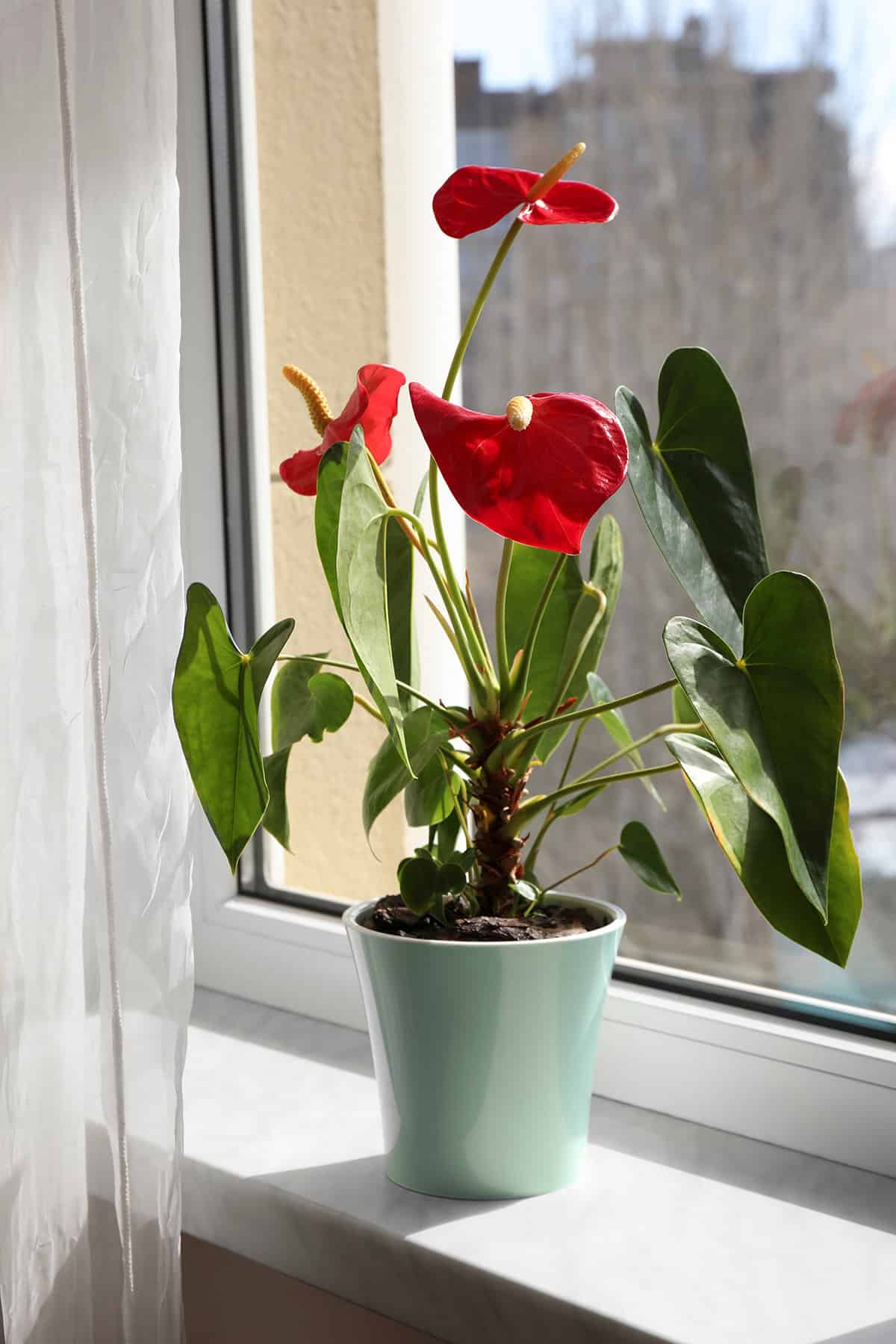
Anthurium plants, known for their striking foliage and vibrant flowers, are popular choices for indoor gardening. These plants thrive in warm, humid environments and can adapt well to indoor conditions.
Common Names And Varieties
Anthuriums are often referred to by a variety of names. You might hear them called “Flamingo Flower,” “Laceleaf,” or “Tailflower.”
Each name reflects unique aspects of the plant’s appearance.
There are numerous varieties, each with distinctive features. Anthurium andraeanum is known for its bright, heart-shaped bracts.
Anthurium crystallinum, prized for its striking veined leaves, showcases the diverse beauty of this species.
With over 1,000 species, Anthuriums offer an extensive selection for plant enthusiasts. Each variety introduces its specific beauty and charm, allowing you to select the perfect plant for your space.
Why People Love Growing Anthuriums Indoors
The allure of Anthuriums lies in their unique and captivating appearance. The plant’s vibrant blooms and lush foliage add a pop of color and elegance to any interior.
People appreciate Anthuriums for their relatively easy maintenance. They flourish in indirect light and prefer high humidity, making them suitable for a variety of indoor settings. Anthuriums are not just visually appealing; they also help in purifying the air by removing toxins.
This quality enhances indoor air quality, adding another reason why these plants are favored by many. Whether you are a seasoned plant grower or a beginner, Anthuriums can be a delightful addition to your indoor garden.
Ideal Growing Conditions
For vibrant and bushy anthurium plants, you should provide appropriate light, temperature, humidity, soil, and drainage. Each factor plays a crucial role in the overall health and growth of the plant.
Light Requirements
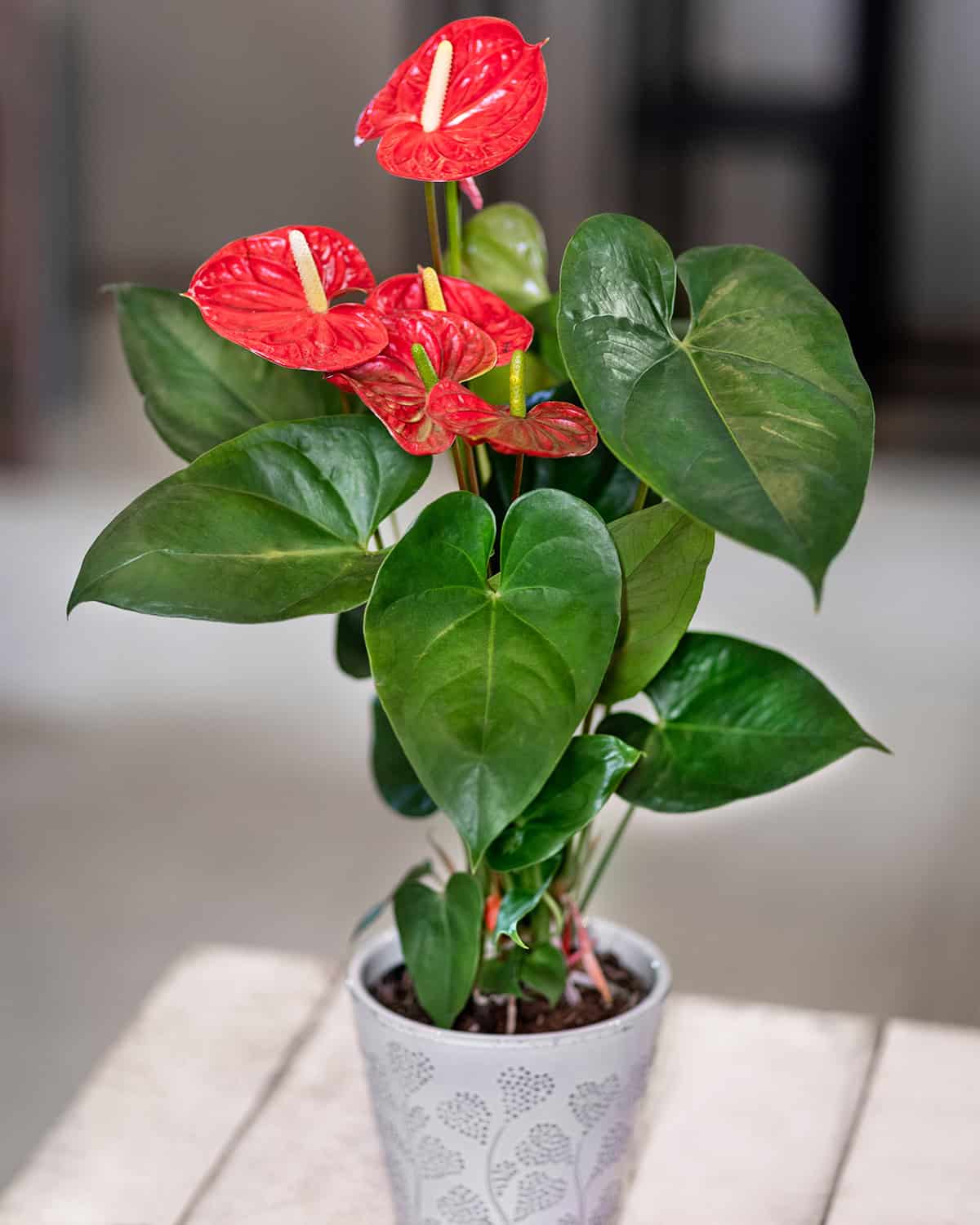
Anthuriums thrive in bright, indirect light. Direct sunlight can scorch the leaves. A few hours of morning sun is beneficial, but keep them away from harsh afternoon rays.
Placing your anthurium near an east or north-facing window works well. If your space lacks natural light, consider using fluorescent lights. Ensure light intensity falls between 1500 and 2500 foot-candles. This balance promotes healthy foliage and encourages blooming without overstressing the plant.
Temperature And Humidity Needs
Anthuriums prefer temperatures between 70°F and 85°F during the day. Cooler night temperatures, around 60°F, are optimal. Steady temperatures without sudden changes support steady growth. High humidity levels, between 60% and 80%, are essential.
If your home is dry, use a humidifier or gravel tray with water. Misting can help, but it’s less effective. Avoid placing your anthurium near heating vents or air conditioners, which can dry the air.
Best Soil Mix For Anthuriums

The right soil mix supports root health and nutrient uptake. Use a well-draining mix with a blend of orchid bark, peat, and perlite. This combination ensures good aeration and moisture retention. Avoid dense, compacted soil as it can suffocate roots.
The soil should be slightly acidic, with a pH between 5.5 and 6.5. Regularly check the soil drainage to prevent root rot and promote healthy growth.
Choosing The Right Pot And Drainage
A suitable pot aids the growth of your anthurium. Choose a pot with drainage holes to prevent waterlogging. Terracotta pots are a good option as they allow for air exchange. Allow some space between the plant roots and the pot’s edges.
This encourages bushy growth and prevents crowding. Ensure excess water can easily flow out. This reduces the risk of root diseases. Check that the pot size suits the plant’s current size and growth rate.
Watering Tips
Watering your Anthurium correctly encourages bushy growth and prevents common issues. It’s crucial to understand when and how to hydrate your plant to ensure its health.
How Often To Water
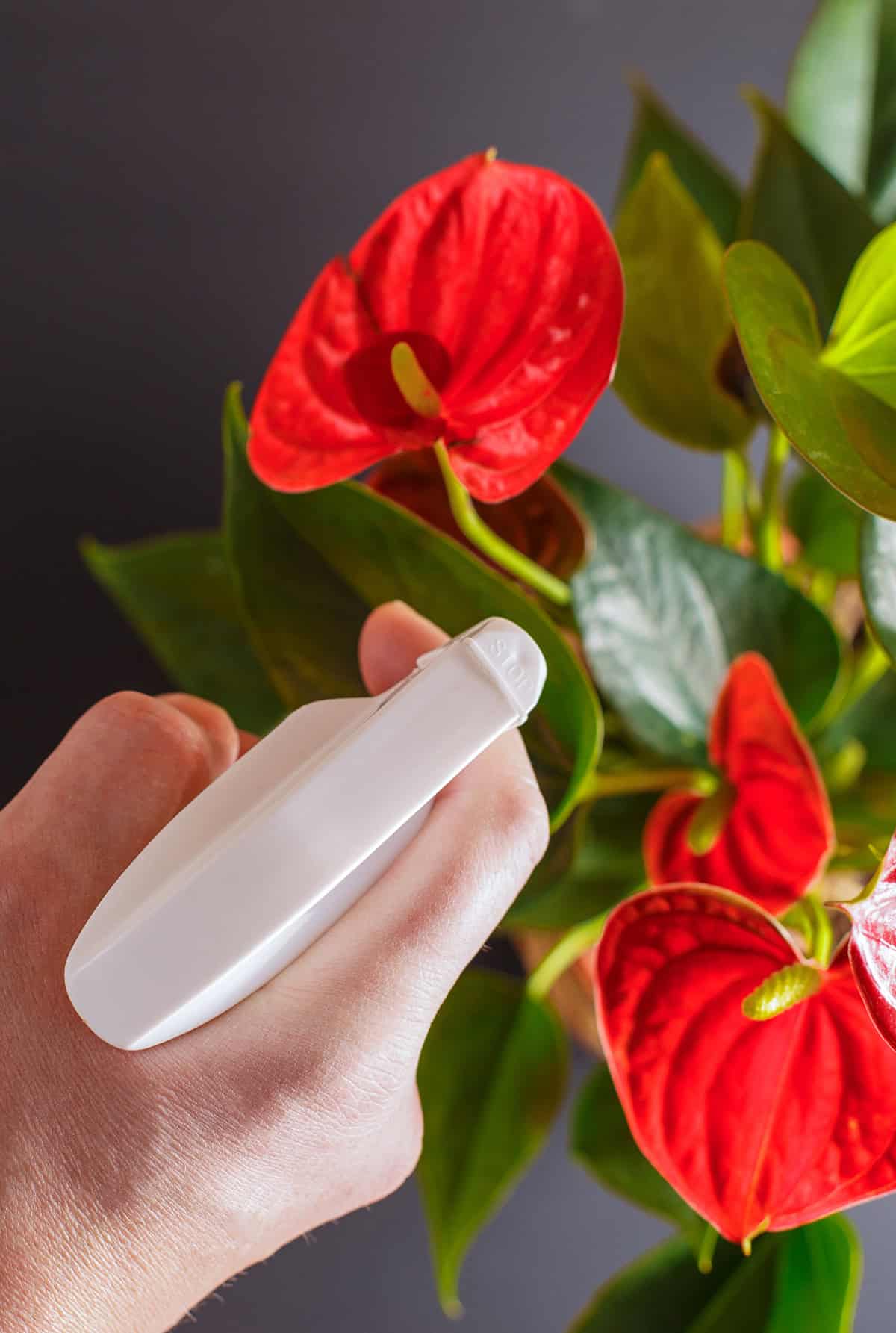
Anthuriums thrive on consistent moisture. Water them when the top inch of soil feels dry to the touch, typically every 1-2 weeks. Overwatering leads to root rot, while underwatering causes wilting. Adjust the frequency depending on humidity levels and season.
During warmer months, the plant may need more frequent watering, while in cooler seasons, less frequent watering could be sufficient. Checking soil moisture regularly will help you establish and maintain the right watering schedule.
Signs Of Overwatering Or Underwatering
Detect signs early to prevent damage. Overwatering often results in yellowing leaves and mushy stems. On the other hand, if the plants are underwatered, you’ll notice wilting or brown leaf edges. Both scenarios stress your plant, impeding growth.
If you see yellow leaves with soggy soil, decrease watering. If leaves are crispy with dry soil, increase it. Monitoring your plant’s reaction aids in timely adjustments and promotes lush foliage.
Using Lukewarm, Filtered Water
Opt for lukewarm, filtered water for the best results. Tap water contains chemicals like chlorine, which may harm your Anthurium. Filtering helps remove these harmful substances. Additionally, extreme water temperatures can shock the plant.
Lukewarm water ensures that roots absorb moisture properly without stress. Let the water sit for a day to reach room temperature if needed. This careful approach supports healthier growth and aids in keeping your plant vibrant.
Fertilizing To Encourage Growth
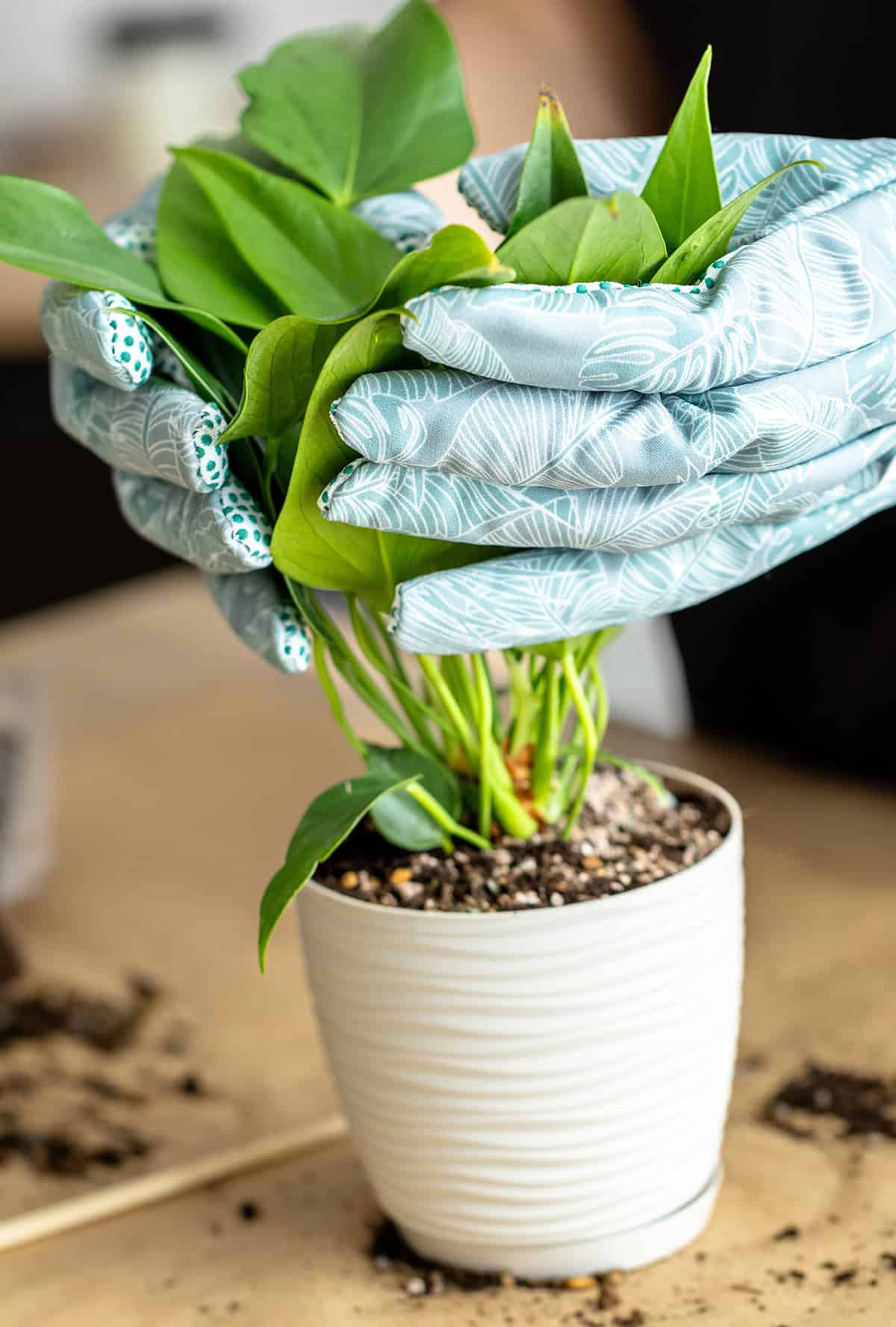
Fertilizing your Anthurium plants is crucial to enhancing their growth and encouraging bushiness. Choosing the right fertilizer, determining the appropriate feeding frequency, and understanding nutrient needs will greatly impact the health of your plants.
Best Fertilizers For Anthuriums
The ideal fertilizers for Anthuriums are those with balanced nutrient ratios, such as a 6-6-6 fertilizer. Look for a blend that provides equal parts of nitrogen, phosphorus, and potassium. This balance supports robust growth and promotes vibrant blooms.
Consider water-soluble fertilizers that allow easy absorption by the plant. Organic options, like compost tea or fish emulsion, are beneficial for soil health without harsh chemicals. Ensure any fertilizer used is of high quality to avoid nutrient deficiencies or soil damage.
How Often To Feed Your Plant
Fertilize Anthuriums every six to eight weeks to maintain optimal growth. Too frequent feeding can lead to salt build-up, harming your plant. During the growing season, typically spring and summer, maintain regular feeding intervals to support active growth. Reduce feeding in the fall and winter as their growth slows.
Adjust timing based on specific plant needs and environmental conditions. If you notice signs of nutrient deficiency, like pale leaves, consider slightly increasing your frequency or quantity.
Nutrients That Promote Bushiness And Flowering
Anthuriums need nitrogen, phosphorus, and potassium to thrive. Nitrogen promotes leafy growth, making plants appear bushy and lush. Phosphorus is essential for flowering and root development, which is important for stocky growth.
Potassium contributes to overall plant vigor and disease resistance. Micronutrients such as magnesium and calcium play supportive roles in overall health. Consider a formula that includes trace elements to cover any additional nutrient requirements, ensuring comprehensive growth support.
How To Make Anthurium Bushy
To make your Anthurium plant bushy, you can employ a few key tactics. Regular pruning, strategic pinching, and ensuring even growth through pot rotation are essential steps. Removing spent flowers also ensures the plant’s energy is focused on new, lush growth.
Prune Leggy Growth Regularly
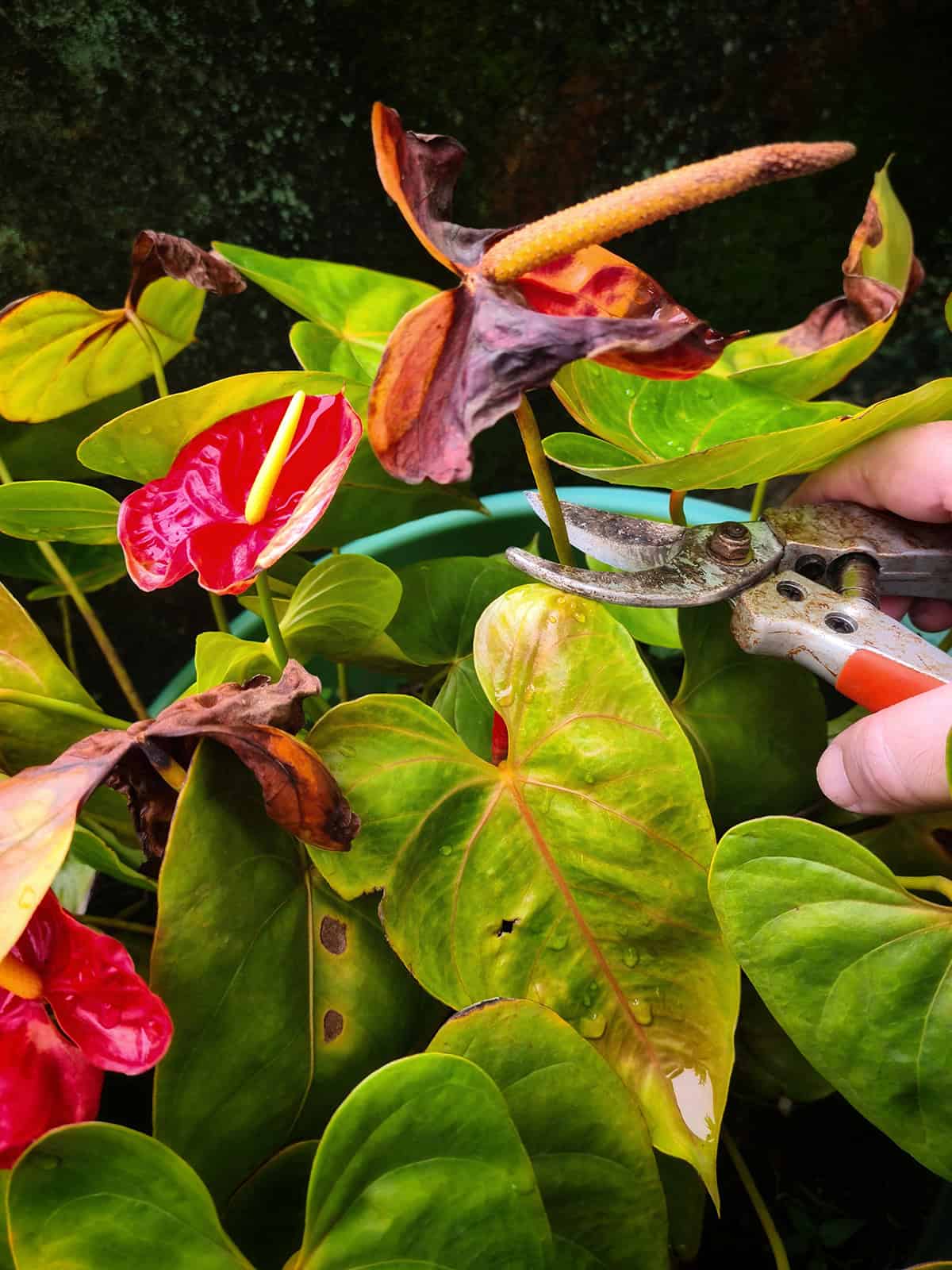
Cut back any leggy or overgrown stems on your Anthurium. Use clean, sharp scissors or pruning shears to avoid damaging the plant. Focus on stems that have become elongated or lack foliage at their base, as these do not contribute to a bushy appearance.
By encouraging the plant to branch out from lower points, you’ll foster a fuller form. Make sure to remove entire stems if they become too long.
Remove Spent Flowers And Damaged Leaves
Clip off any wilted flowers to halt seed production, which diverts energy away from foliage growth. Dead or yellowing leaves should also be removed. This practice not only tidies up the appearance but also redirects the plant’s energy to developing new leaves.
Removing these parts minimizes the potential for disease, and you will notice a denser, healthier look over time.
Pinch Back New Growth Strategically
Pinching involves removing the tips of new growth to promote bushiness. You’ll want to carefully assess which new shoots to pinch. Focus on areas where you’d like to see more branching. This causes the Anthurium to produce lateral growth, leading to a fuller appearance. Be cautious not to over-pinch, as this can stress the plant. Allow some new growth to unfurl naturally.
Rotate The Pot For Even Growth
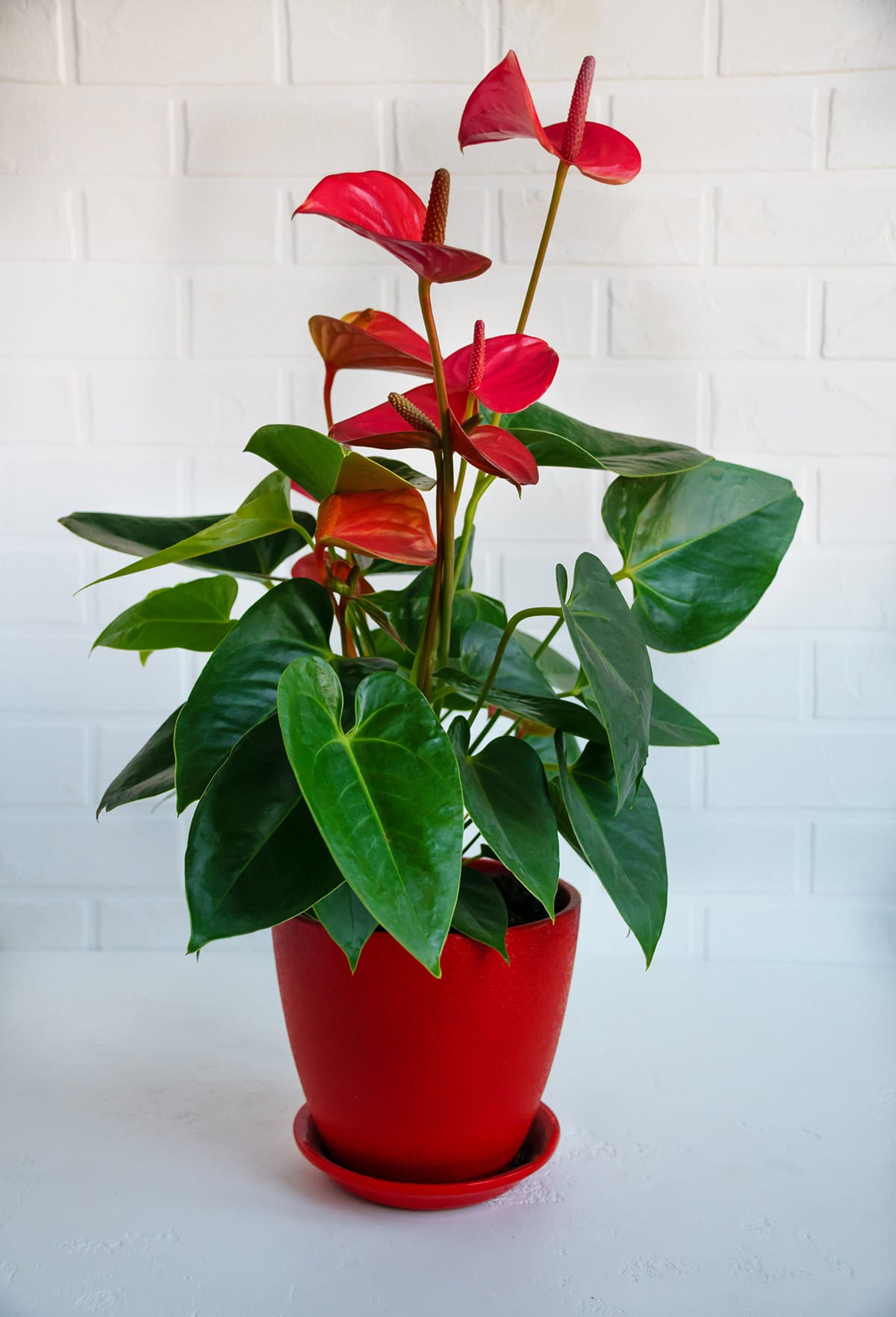
Turning your Anthurium’s pot regularly ensures that all sides receive equal sunlight. Plants naturally grow towards light, leading to unbalanced growth if left unchecked.
Rotate the pot a quarter turn every week to maintain symmetry and prevent a lopsided form. This simple step can have a significant impact on overall bushiness and plant aesthetics.
Use A Support Stick For Compact Form (If Needed)
Sometimes an Anthurium needs a little help to maintain its shape. Insert a support stick into the soil when stems start drooping or growing unevenly.
Tie the main stems to the support using soft ties to avoid cutting into the plant. This guidance helps keep your Anthurium compact and upright, promoting more even growth throughout the plant.
Repotting And Dividing For A Fuller Plant
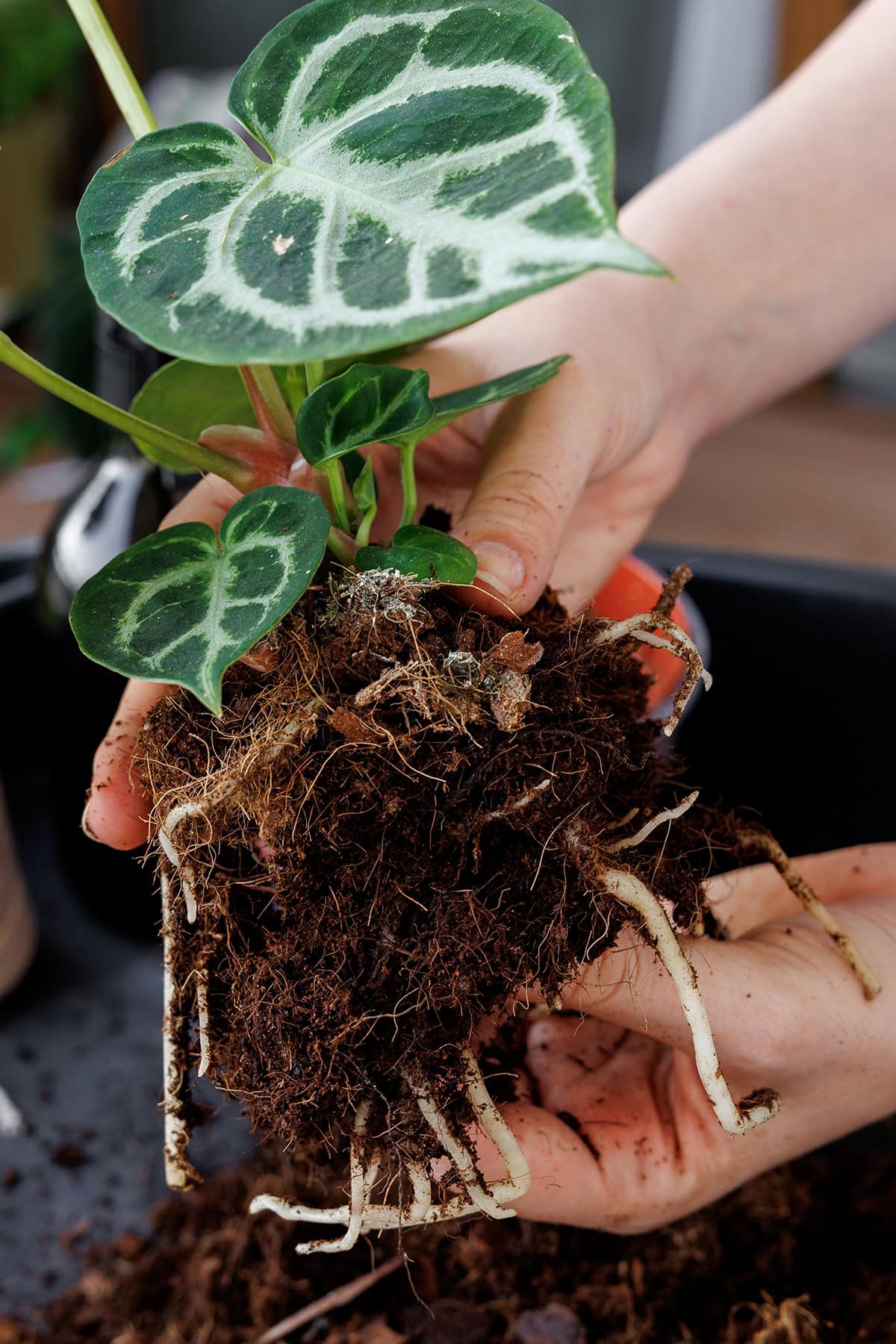
To help your Anthurium achieve bushier growth, pay close attention to repotting and plant division. Proper techniques and timing are key for creating a healthy and vibrant plant.
When And How To Repot Your Anthurium
Repot your Anthurium when it outgrows its current container. Look for roots emerging from the drainage holes. A pot one size larger will usually suffice. Choose well-draining potting mix to prevent waterlogging. Remove the plant from the pot carefully, loosening the root ball gently.
Fill the bottom of the new container with soil before placing the plant inside. Add more soil around the roots, ensuring it is adequately covered without packing it down. Water thoroughly to settle the soil. Repotting every 2-3 years is typically recommended to maintain optimal growth.
Dividing Crowded Plants To Encourage Bushiness
Divide Anthurium plants when they appear overcrowded. Clusters of rhizomes or stems can lead to reduced growth. Carefully separate the plant into smaller sections using clean shears or a spade. Ensure each section has sufficient roots and stems.
Plant each division in a separate pot with fresh soil, providing enough room for growth. Water the new divisions well and maintain consistent humidity levels. This division process encourages new growth, resulting in a bushier plant.
Signs It’s Time To Upgrade The Pot
Recognizing the signs that your Anthurium requires a larger pot is crucial. Roots visibly creeping out from drainage holes indicate the plant’s need for more space. If your Anthurium quickly dries out after watering, it may be pot-bound. Stunted growth or wilting despite proper care could also signal that repotting is necessary. Upgrading to a larger pot can alleviate these issues, providing the necessary space for root growth and improved nutrient absorption. Keep an eye on these signs to ensure your plant thrives.
Common Anthurium Problems And Fixes
Addressing common issues with anthurium plants can help maintain their health. Recognizing symptoms like yellowing leaves or pest infestations ensures that your plant remains bushy and vibrant.
Yellowing Leaves
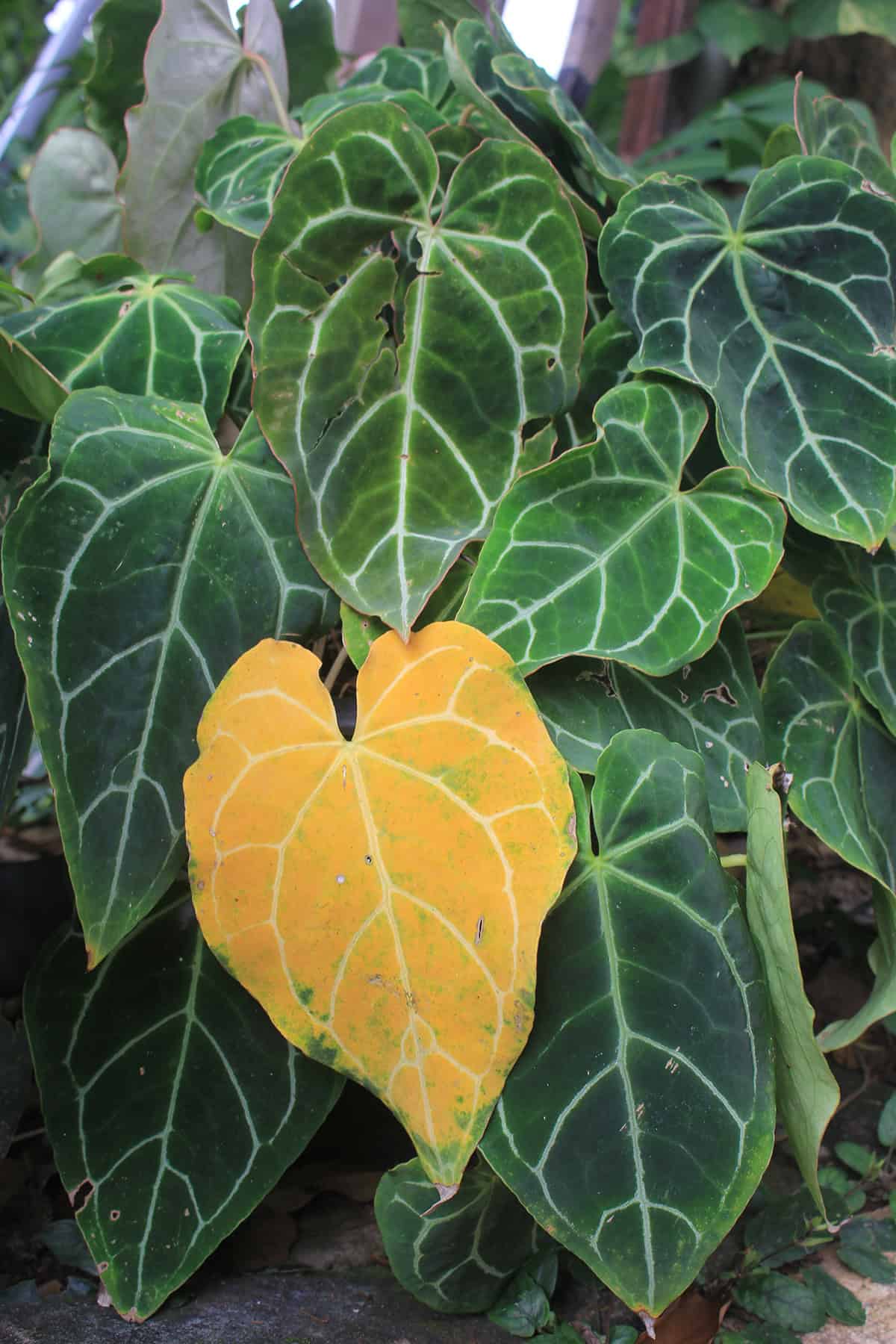
Yellowing leaves on your anthurium can signal a few different issues. Overwatering often leads to stagnant roots, which may cause leaf discoloration. Make sure the potting mix is well-draining and the container has ample drainage holes.
Inadequate light can also result in yellow leaves. Place your anthurium in bright, indirect sunlight for optimal growth. Nutrient deficiencies can be another factor, so provide a balanced fertilizer every six to eight weeks during the growing season. Checking these factors can help restore your plant’s vibrant green color.
Pests Like Mealybugs Or Spider Mites
Anthuriums are not immune to pest invasions. Mealybugs and spider mites are common pests that attack these plants. Mealybugs appear as white, cotton-like clusters on leaves and stems. Spider mites create fine webbing and yellow specks on leaves.
You can combat these pests by regularly wiping the leaves with a damp cloth. Using insecticidal soap or neem oil effectively controls infestations. Ensuring proper humidity and avoiding dry air can also deter pests. Early detection is key, so check your plant frequently to maintain its health.
Root Rot And How To Prevent It
Root rot poses a significant threat to anthurium plants. Usually caused by overwatering, it results in mushy, discolored roots and wilting leaves. Ensure that your anthurium’s pot has good drainage. Use a potting mix with orchid bark, perlite, and peat moss for quick draining. Water only when the top inch of soil feels dry to the touch.
Avoid letting water sit in the saucer under the pot, as standing water fosters rot. By keeping an eye on watering habits, you can prevent root rot effectively.
